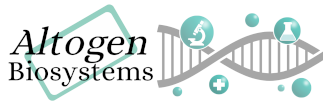Shop Products
What is the best method to detach cultured cells?
Cultured adherent cells routinely need to be detached and collected for counting or passaging. Detaching cells can be accomplished by either mechanical or enzymatic methods.
- Mechanical: cell scraping is a good option for cells that are sensitive to trypsin but can cause damage to cells; also can be used when collecting cellular components for western blot assay or analyzing cell surface receptor expression
- Enzymatic: commercially available enzymatic reagents, such as Trypsin, is the most gentle detachment method available; beware that exposure to long periods will damage intracellular proteins. Trypsin should be used at 0.05% concentration and applied to the cells for 5-10 minutes (flask should be incubated at 37’C to enable full enzymatic activity of Trypsin)
- Alternatively, the Ca- and Mg-free PBS and EDTA can be used. Using Trypsin cleaves proteins that attach a cell to its substratum, while EDTA chelates the Ca and Mg ions (required for cell attachment proteins to maintain their structure). EDTA should be used in experiments where immediate reattachment of the cells is required.
- Other reagents include:
TrypLE (microbial origin)
Accutase (crustacean origin)
EDTA (chemically defined)





Sorry, comments are closed for this post.